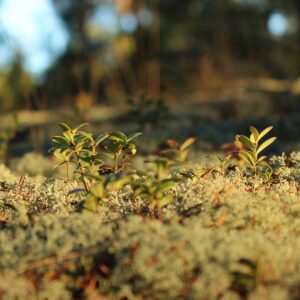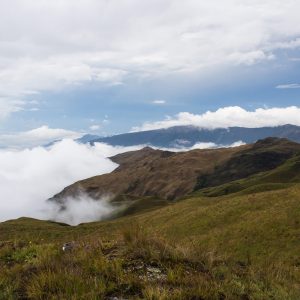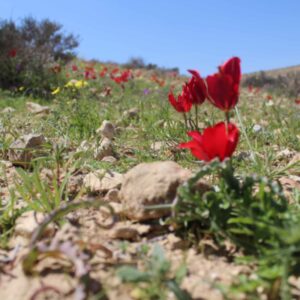Interactions along gradients
How life forms and their interactions with the environment change across elevation or latitude is one of the most fundamental questions in ecology and biogeography. As the climate is warming, they gain additional relevance, as ecological conditions at high elevation/latitude are expected to gradually align with what is currently visible further down or closer to the equator. Elevational gradients therefore represent attractive natural laboratories, allowing to examine organisms – and their interactions – in a range of environments within close distance.
Shrub changes in Arctic tundra: who's there controls who's coming in
As part of my PhD research on the causes and consequences of shrub vegetation changes in Arctic tundra, I investigated how biotic factors shaped the abundance of shrub species along elevational and coastal-inland gradients in Western Greenland. Based on the competitive strength (represented by leaf economic traits) of the local shrub communities, I developed an index for competitive pressure for a given shrub species to see if its abundance depended on the specific community composition.
Lower competitive pressure indeed favoured the abundance of deciduous shrub species, and some species were less abundant with higher presence of grassy vegetation. Biotic interactions among plants might thus be more important than commonly acknowledged, and should be considered in model predictions of tundra vegetation changes.

>> von Oppen et al. (2021) Journal of Vegetation Science [full text]
elevation and Fire control functional composition of plant communities
During the 5th edition of the Plant Functional Traits Course in Perú in March 2020, we sampled plant communities spanning 1200 m in elevation. Here, in the Puna region, alpine grasslands also experience recurring fire events during the dry season. Our sampling along the gradient focused on community-level trait expression depending on fire history, and how intraspecific variation in morphological traits changed with elevation in selected species. Although the course was disrupted by the outbreak of the COVID-19 pandemic, we were able to compile a respectable dataset that is now published. In addition, we learned valuable lessons both for the efficient design of field courses, mainly through combining Open Science methods and online learning techniques, and for personal and collaborative approaches to research in general. I was also able to join the subsequent edition of the course in Aurland, Norway for a couple of days in summer 2022.
We are currently preparing a data paper for the 2022 course and several research manuscripts from both courses for publication.

parental environment shapes offsprings' competitive ability
Not only can plants adapt to their environments over time, they can even pass that adaptation on to the next generations (‘parental effects’). But what if the environment (such as, competition pressure from neighbours) is pretty variable and unpredictable, for instance with high differences in water availability between years, such as in drylands?
Our greenhouse experiment, exposing target plants from Israel to varying levels of drought and competition, showed that such favourable imprinting is indeed happening
in terms of competition. As plant densities vary more predictably (more seeds after wet years), this makes sense as wet-year offspring will be better prepared to survive in a more competitive community. At the same time, it was interesting to see that no such effect was visible for drought adaptation – apparently less prioritised by these plants given the highly variable Mediterranean environment.

>> Metz et al. (2015) Journal of Ecology [full text]